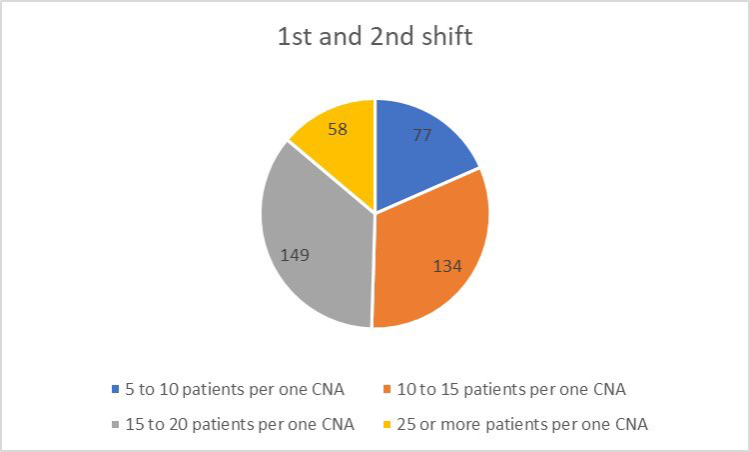
Published on:
A new survey from the National Association of Health Care Assistants (NAHCA), the professional association for Certified Nursing Assistants (CNAs), reveals the greatest challenges front-line workers are having within the long-term care industry.
The results were not surprising. According to NAHCA, the top three challenges for CNAs are 1) wages, 2) staffing, and 3) respect. Each of these challenges has been simmering in the industry for years, but the COVID-19 pandemic has brought them to the point of boiling over.
Wages
Wages have been a looming concern for a long time. In a previous post, I called for an increase in caregiver pay and noted how COVID has wreaked havoc on the long-term care industry’s historic reliance on cheap and flexible labor. The NAHCA survey confirms that today’s direct care workers expect better compensation: nearly 84 percent of the CNA respondents indicated that higher wages and better benefits would be necessary for them to consider returning to (or staying in) the field.
Staffing
Staffing is central to the delivery of care, but it has also been an ongoing challenge for the industry. Staffing is all about ratios. How many residents can a single CNA serve during a shift? Varying state regulations come into play here, but the answer is also partly determined by the time of the shift. Aides working the morning and evening (first and second) shifts usually have lower staffing ratios because there is more work involved in preparing residents for daytime or nighttime, respectively. Overnight (third) shifts tend to have higher staffing ratios because residents are theoretically less likely to need attention and more likely to be sleeping.
The NAHCA survey produced the following findings on staffing ratios:

*Chart is from Twitter page of Lori Porter, CEO of NAHCA
As you can see, about 50% of the CNAs surveyed who are working in first/second shift are responsible for the care of 15+ residents. About 14% of the CNAs in first/second shift take care of 25+ residents—which is a staggering number of people for a single individual to care for.
If a CNA cares for 15+ residents at once, especially when resident acuity is high, there is little to no “down time.” The aide is constantly moving around the floor, successively attending to one resident after another as quickly as possible. In such environments, quality of resident care suffers, and CNAs are likely to experience exhaustion and burnout.
When you couple high staffing ratios with low wages, the struggle of the long-term care workforce starts to become evident.
As if that wasn’t enough, the NAHCA survey reveals a third challenge, one that lurks behind wages and staffing ratios. I find the third challenge to be particularly troubling.
Respect
Respect should be automatically granted to CNAs for the hard physical and emotional labor they perform every day. However, the sad reality is that CNAs often report being disrespected by administrators, healthcare professionals, residents, and families.
One CNA explained, “I feel like the lack of respect for the job that we do is the largest problem. Until society sees firsthand what CNAs do and recognizes the value we bring to patient care and experience, they will not take our jobs seriously.”
Also responding to the NAHCA survey, another CNA made the following comment about their challenges: “The [staffing] shortage is obviously the number one factor, but the degrading and disrespect we receive from not only the corporations but also the families, as we are trying to do our best.”
Unfortunately, such comments from the aides did not come unexpected. I have witnessed occasions where CNAs were perceived by others to be subservient, unintelligent, or replaceable. In my view, nobody deserves to be treated like that.
Impact of COVID-19
Let’s not forget the impact that COVID-19 has had on CNAs working in long-term care. Since the pandemic struck, CNAs have risked their own health and life to care for the residents who depend on them. They have endured societal criticism, COVID outbreaks, increased regulation, quarantines, insufficient personal protection equipment (PPE), and tougher-than-usual staffing problems. Perhaps most significantly, these CNAs have been there, day after day, hour by hour, as their residents battle COVID-19. Many CNAs delivered continuous care to residents who ultimately lost that battle.
Losing a resident means losing a friend for most CNAs.
The toll of COVID-19 has been heavy for these front-line workers. The NAHCA produced a video to show how COVID-19 has affected them. I believe the video poignantly represents CNAs who exemplify both a professional commitment to their work as well as a personal connection to their residents.
What Is to Be Done?
As you consider the top three challenges CNAs face, which pre-dated the pandemic, and then add the horrors of COVID-19, is it any wonder that the long-term care industry has workforce management issues?
Recognizing the problems, the White House recently announced a series of reforms designed to improve the quality of care in nursing homes. Notably, the suggested reforms include a federal standard for staffing ratios as well as wage improvements and career pathways for CNAs.
In addition to improving pay and reducing staffing ratios, the long-term care industry can also make a concerted effort to treat front-line workers with the respect they have so obviously earned. COVID-19 tested this workforce beyond our imagination, and CNAs who have chosen to stay in the field deserve nothing less than our appreciation and support.
If an organizational culture diminishes and demeans CNAs, then the organizational culture must change. This starts at the top with leaders who empower and value all caregivers, no matter where a particular caregiver fits into the organizational hierarchy.
The plea for greater respect toward CNAs is extended to people outside of industry organizations, too. Some families and members of the public are prone to excessive criticism, devaluation, or disrespect for CNAs working in long-term care. Please understand that for the most part, these workers are doing the best they possibly can in a work environment that is riddled with difficulty.
Remember that every one of us could potentially become dependent upon a CNA for assistance someday in the future. To promote a better workforce for tomorrow, let’s all do what we can to appreciate those who serve us today.
Posted in Caregiving, Healthcare, Organizational Caregiving




